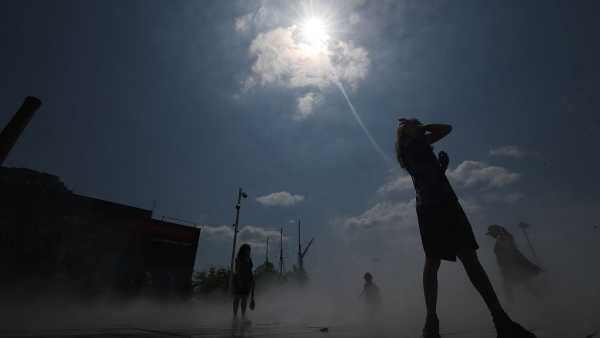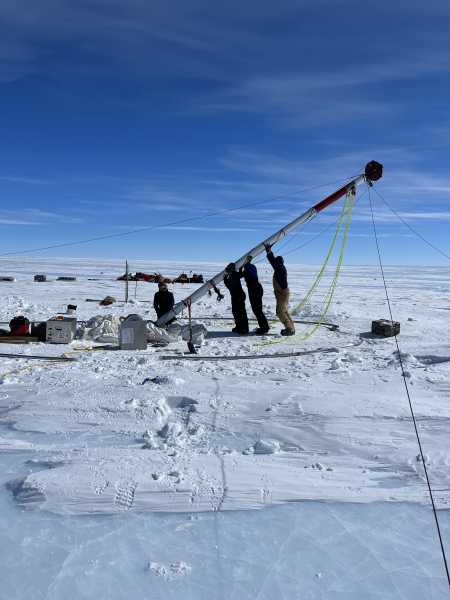
Melting ice sheets could cause the North Pole to shift 89 feet (27 meters) by 2100, according to a new study. (Photo Credit: Ashley Cooper via Getty Images)
A new study suggests that rapid ice melting due to climate change could cause the Earth's geographic poles to shift in the coming years.
As ice sheets melt and ocean mass redistributes around the world, the planet's geographic North and South Poles could shift by 89 feet (27 meters) by 2100 due to a change in Earth's rotation axis, according to a study published March 5 in the journal Geophysical Research Letters. The scientists note that this shift could affect the navigation of satellites and spacecraft.
As the Earth rotates, changes in the distribution of mass cause it to wobble on its axis, like a spinning top. Many of these oscillations are regular and predictable—some are caused by changes in atmospheric pressure and ocean currents, while others arise from interactions between the core and the mantle.
Recent studies have shown that melting ice sheets and glaciers could also affect the distribution of mass and shift the Earth’s poles. In a new study, a team of scientists from ETH Zurich analyzed the movement of the poles from 1900 to 2018 and the melting projections of the ice sheets to determine how far the poles could move under different human-induced climate change scenarios.
The researchers found that the North Pole could shift westward more than 89 feet by 2100 under a worst-case scenario for greenhouse gas emissions. Even in a more optimistic scenario, the pole could still shift 39 feet (12 meters) from its position in 1900. Meltwater from the Greenland and Antarctic ice sheets played a key role in the modeling, followed by glacial melt.
“This effect is somewhat larger than the effect of glacial isostatic adjustment, which is the restoration of the solid Earth after the end of the last ice age,” study co-author Mostafa Kiani Shahvandi, a geologist now at the University of Vienna, told Live Science.
In other words, the crustal surface sank under the weight of the Ice Age glaciers and rose as they melted, changing the distribution of weight in the crust and shifting the poles. “This means that human impact has shifted the pole more than the effect of the ice ages,” added Kiani Shahvandi.
Causes confusion for satellite navigation
A change in the Earth's rotation axis can make it difficult for satellites and spacecraft to navigate, Kiani Shahvandi said. Scientists use the Earth's rotation axis as a reference point to map the location of spacecraft. If that axis shifts over time, it becomes more difficult to pinpoint the location of a spacecraft.
Future research could include analyzing paleoclimate data to see how much the poles have moved over millions of years during past natural climate events. This could help determine the true extent of human impact on the polar movements, according to Kiani Shahvandi.
This story was originally published on April 8.
TOPICS glaciers

Skyler WareNavigate Social LinksLive Science Contributor
Skyler Ware is a freelance researcher.
Sourse: www.livescience.com





